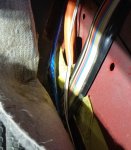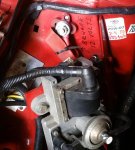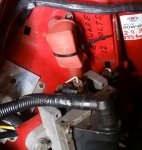Would like some advice from people in the know.
Have relocated battery to the back.
Will fuse the main supply cable.
On cold start, draws 70 Amps.
What do the experts recommend:
Fast or slow blow?
150% or 200% of starting current.
Am thinking of using something like this mounted to the pos terminal.
Thoughts????

Have relocated battery to the back.
Will fuse the main supply cable.
On cold start, draws 70 Amps.
What do the experts recommend:
Fast or slow blow?
150% or 200% of starting current.
Am thinking of using something like this mounted to the pos terminal.
Thoughts????

















